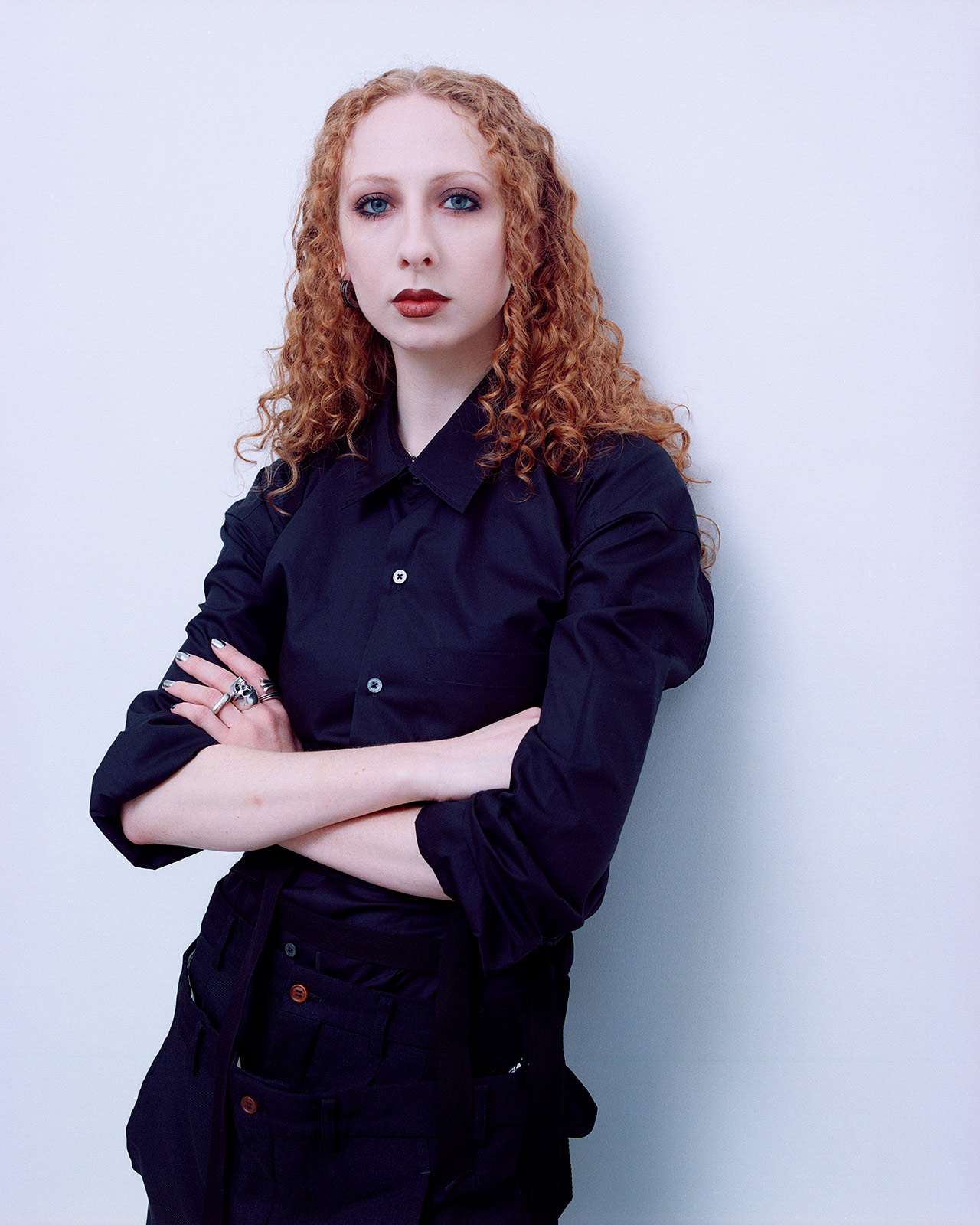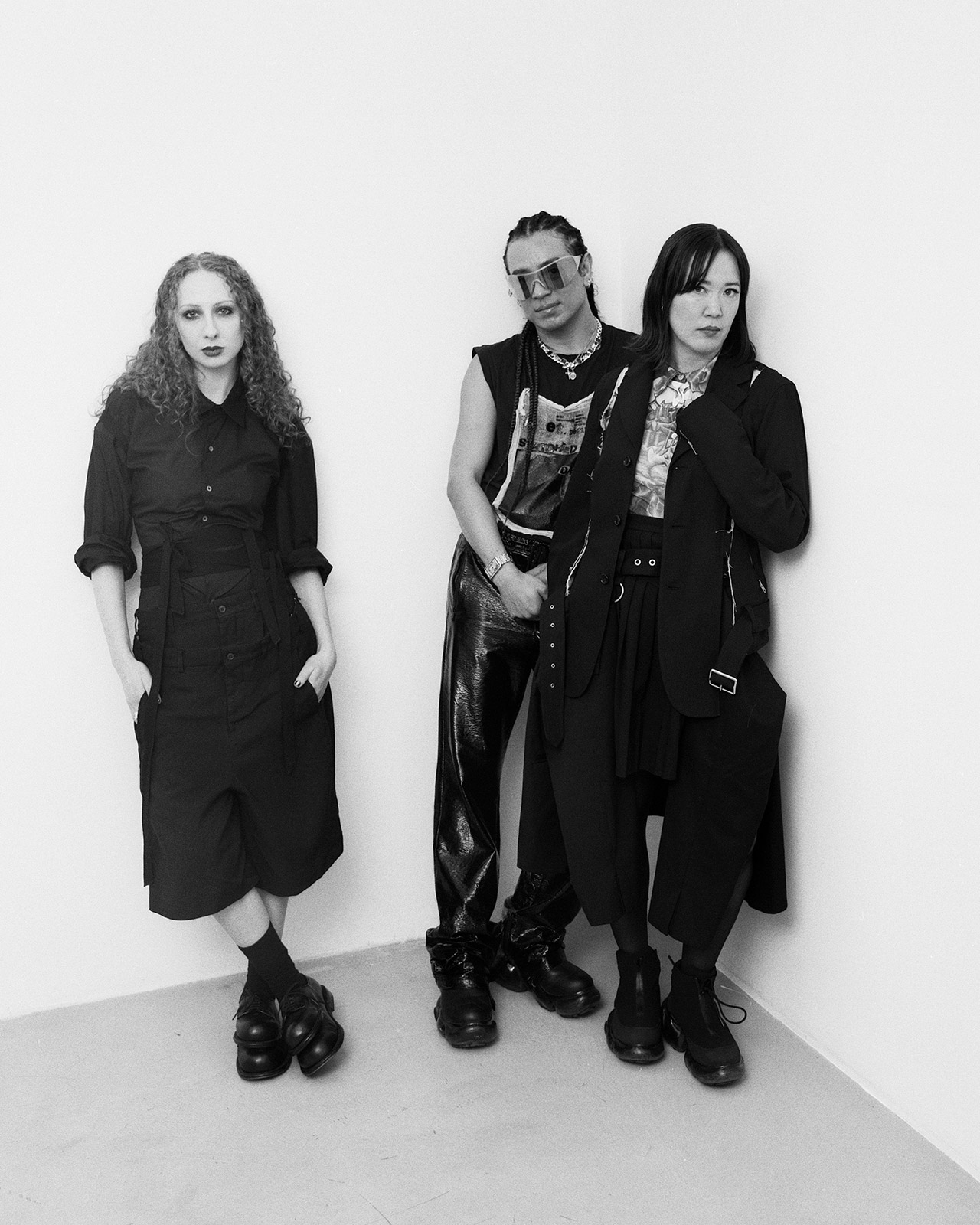At an iconic intersection on the LES, the multi-brand retailer redefines what it means to shop luxury Downtown
I first came across ESSX accidently, strolling with a friend in the Lower East Side after a few weeks out of town. The concept store-meets-community space seemingly emerged overnight, housing brands I’ve never seen in person in New York in an immaculately designed storefront (which I later learned is the brainchild of architecture studio Leong Leong). It felt like a fashion mirage near the quintessentially New York crossing of Essex Street and Delancey. What the hell is this place, and where did it come from?
Laura Baker, ESSX’s co-owner, worked with brands and buyers through her own showroom for years, before teaming up with Yoel Zagelbaum and Abe Pines to open their store in June of last year. ESSX marks a new era for retail in the city and bucks traditional ideas of a luxury multi-brand retailer, like designated menswear and womenswear sections. Most importantly, ESSX’s central goal realizes the simple, central want from first-time luxury shoppers and Downtown fashion heads alike: a dynamic space for them to experiment with their personal style.
In a conversation with Document, Baker joins Abe Chavez, head buyer, and store manager Fifi Hodgkinson to talk about the contours of building community, the world of young designers, and the secret identity of ESSX’s curator of vintage tees.
Colin Boyle: Take me back to the conception of ESSX.
Laura Baker: ESSX kind of came out of necessity. I was always on the wholesale side of the industry—I owned and operated a showroom for the past 13,14 years. I met my partners through a project that I was working on through the showroom, they had the space and wanted to open a store. What they were talking about was very much what we wanted to see. We missed the idea of having multi-brand stores with a lot of emerging talent, a place that can be a hub for creatives, artists, musicians, that kind of road where all lanes lead back to fashion.
Colin: The shop is in the Lower East Side, rather iconically at Essex and Delancey. Was the space chosen after the concept came, or did the concept come after finding the space?
Laura: This space was intentional. My partner had a store on the Lower East Side over on Ludlow for quite a long time. When we were thinking about where the space would be, we did consider Soho, and Meatpacking, but we just felt it was a bit boring. And we knew the brand mix that we were gonna go after. A lot of those brands that we carry wouldn’t really survive in an area like Soho, where it’s primarily tourists. It’s very neighborhood-y down here, there’s a lot of young creatives that live in this neighborhood, [some of whom] even work for the brands.
Colin: What’s your general buying philosophy here in terms of brand selection and curation?
Abe Chavez: I mean, I think it’s definitely a mix of younger emerging brands and brands that really aren’t attainable in-store. We’re really trying to be ahead of the curve and at the same time filter them in with some established names.
We look at buying from a genderless lens—everything is for everyone. And we don’t really buy in conventional men’s or women’s, it’s not just how we present the clothes here, it’s kind of across the board, you know?
Colin: It’s interesting because you’re presenting clothes in a genderless way, even when the brands present them as menswear or womenswear in their own store or website.
Fifi Hodgkinson: Sometimes customers come in and they ask where the women’s section or men’s section is. But I think we are diving into the modern approach of fashion being available for everybody. It’s cool that we’re able to lean into that, and that clients can get into it also.
Laura: It’s wild, everybody asks ‘Who’s your customer?’ I take that thought home a lot, because we’re still in the infant stage of our business, and we’re still, even on our own side, confirming our own brand identity. And a lot of that goes back to who our customer is.
Colin: Speaking of those younger brands, where are you discovering them? How is stocking product from emergent designers different than with someone more established?
Laura: Discoverability is what’s going to set the store apart than any other store. And it’s important that we have that. Are they the easiest to work with? No. Do they know how to put together a price? No. Do they know when to ship? Probably not. Do they know how to label things? Not always. But I think it’s our job as merchants to make sure that we guide them, and we incubate them to be able to have a business.
Abe: I think it all comes very organically. We’ve all been in the industry for quite a while. So I feel like the brands come to us when we’re in-market. But also one thing leads to the next, and it connects the dots. It’s nice to be able to nurture and support that talent and bring that element of discoverability to the store.
Laura: Because we’re a new store, we didn’t have retail history, and we had a lot of nos in the beginning. As soon as we opened the doors, we got 1000 yeses. Sometimes they just walk right through the door, and we try to take every meeting that we can.
Fifi: I love this story that I’ve overheard you tell people before, of the boys behind [the jewelry brand] Merc coming into the store. Laura saw these incredibly dressed young men with all these jewels and pearls on.
Laura: At first I didn’t understand [why they were there]. We always have so many shoots at the store, so I asked Are you guys here for a content shoot? We just started talking to them about their accessories, and they mentioned that they make these necklaces. I put them in touch with [someone] to teach them how to price it wholesale, price it for retail, and how to package it. That’s what I consider a win.
Colin: That also directly supports New York fashion. How do you maintain that, especially when the buyer incentive is lower now to invest in these brands? Where do you feel ESSX factors into the local fashion community?
Laura: We do a lot of events. Thankfully, we have a killer PR team that can handle that. It’s very important that we support New York. A big part of why I had to close my previous showroom was because there were less and less retailers to sell to. There wasn’t enough international press that was coming through for Fashion Week. There weren’t enough international designers. There weren’t even so many new designers coming out of New York, and the younger ones were all leaving, showing in other countries and other markets.
There are a lot of great designers in New York. And it was important that we brought them back into this store and worked closely with them. We try to give the space to every New York designer that we feel is right for the store. I think people come in and they don’t even ask for the brand name, they ask for the names of the designers themselves, like ‘Do you have Raul’s brand? Do you have Shayne’s brand?’ And we love that.
Colin: I think there’s also something to be said about transcending from a multi-brand store to being a brand yourself. We’ve talked about community, but I’d love for each of you to kind of give in a few words, what you feel like the ESSX brand is.
Laura: The hardest question that any editor has ever asked us is ‘What is ESSX?’ We can give you the simple answer: It’s a multi-brand concept store. But beyond that is much a longer answer.
Abe: For me, it’s all about going back to inclusion, on personal identity and exploring that and representing that through the clothes and the customers. It makes it fun on my end, because [with stylists and clients] we’re not confined to being safe. We can really take chances with these more runway pieces or designers. We’re not really pushing t-shirts and jeans at the end of the day. We don’t carry a lot of that.
Fifi: People want the ‘wow’ factor.
Abe: But it’s New York. So people just dress like that, period. They want the statement pieces.
Laura: As Abe said, we don’t really buy casual. We have maybe one brand that is kind of a closet filler for standards. When we do bring in t-shirts and hoodies it’s usually vintage. That vintage curation has been really special to us, a lot of our customers come back weekly to see if we’ve restocked.
Colin: Where do you find these pieces? Because they’re one of a kind.
Laura: We work with a curator. We call him Mr. X.
Colin: Love the mystery.
Laura: I actually don’t know his name. I literally just call him Mr. X.
Abe: Yeah, we’ll stick to that. [Laughs]





























